Weird But True Facts
You Didn't Know You Didn't Need
Weird but true facts are for when you are feeling bored, but not ready for the really silly stuff that can also be found on Quotescoop.com.
So, what makes for an "interesting fact"? Well, one person's "interesting fact" might qualify as another's "dull homework," and so "interesting" is clearly in the eye of the beholder.
Nevertheless we will give it a try.
We have researched these facts to the best of our ability, and we do think they are true, but we will not swear to it, because in the end we just don't know. In any case, they are a bunch of amusing and interesting facts.
Interesting weird facts also tend to be obscure, because the very familiar is seldom very interesting ... In general, the more obscure a fact, the more interesting it is likely to be. So get ready for some obscure, bizarre facts! :-)
Did You Know Facts: Trivia and Quadrivia
- 1st of 15
Some facts are so obscure they fall under the term of "trivia."
This is an ancient Roman term meaning "three roads", and was used in the Middle Ages to refer to the three liberal arts of grammar, rhetoric and logic.
Undergraduates in Medieval universities studied these "trivia" in preparation for the advanced "quadrivium" of arithmetic, geometry, music and astronomy.
By the 20th century, the term trivia had come to describe the sorts of things that are so obscure that they are, perhaps, not really worth knowing. There's your first obscure, interesting fact!
Weird But True Facts: Cold Eskimo Talk
- 2nd of 15
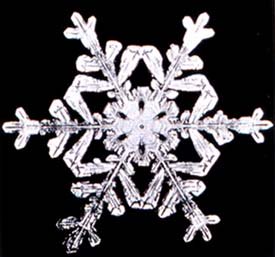
To qualify as an interesting fact, it is important that a fact be weird, but true. This negates a number of commonly-known "facts" that turn out to be no more than interesting nonsense.
The most famous example of this may be the claim that the vocabulary of the Eskimo peoples of North America includes more than 100 words for different types of ice and snow, supposedly as a result of having so much ice and snow in their immediate environment.
But linguistic research has established that the Eskimo-Aleut languages have about the same number of such words as non-icebound languages. English, for example, has at least a dozen, including: snow, ice, powder, slush, sleet, rime, hardpack, hoarfrost, cornice, hail, frost, floe, and glacier.
However ... researchers who study the Sami peoples of far northern Europe report that the Sami language does, indeed, have more than 100 different words for snow! :-)
Silvered Skin
- 3rd of 15
The term "blue blood", used to refer to aristocratic families, is said to have come about because the skin of some European nobility had a blueish cast. Now why would that be?
Well, the discoloration was caused by a condition known as Argyria - the result of particles from silver plates, cutlery and cups ingested with their food and drink. Silver is not metabolized by the human body and accumulates in the body over time, resulting in a concentration of silver-based compounds in the skin.
These silver compounds darken when exposed to sunlight - in the same way as early photographic plates that used photo-sensitive silver compounds. Result: the skin of royalty and aristocrats turned a distinct blue-gray or even greenish color - and there we have our true blue bloods!
Silver is not particularly toxic, and most people with Argyria suffer no other problems apart from the cosmetic distinction of having blue skin.
The condition was once also prevalent among people who worked in factories that produced silver products, and people who were treated with silver-based medicines for various internal ailments, until such medicines were discontinued in the 1940s. So, in fact you don't have to be aristocratic to be 'a blue blood'.
Funny Interesting Facts: Cleopatra's Pearl Cocktail
- 4th of 15
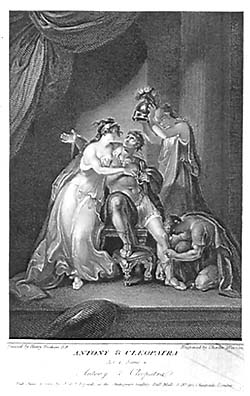
Queen Cleopatra of Egypt is said to have possessed the largest sea-pearls ever known, which she had inherited from the ancient Pharaohs. She used one of them to pick up a guy ... but not just any guy, a would-be Roman emperor.
The Roman writer Pliny reports that Cleopatra was wearing these huge and immensely valuable pearls as a pair of ear-rings at a dinner with her lover, the Roman general Mark Antony, when she called for a goblet of vinegar.
She took off one earring, and dropped it into the vinegar, where it began to melt in the acidic liquid. When it was melted, she offered the goblet as a toast to Antony - and to his amazement, drank it down. Cheers!
Pearls were associated with the Venus, the goddess of love, who was likewise "born of the ocean" in Greco-Roman myth - and so dissolved pearls had a reputation as an aphrodisiac. Perhaps Cleopatra was feeling the need to boost her libido in relation to Mark Antony.
Funny Interesting Facts: Presidential Piranha Show
- 5th of 15
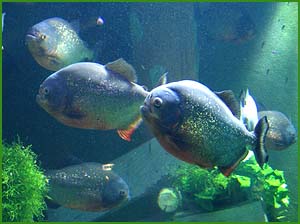
The South American piranha fish has an undue reputation for ferocity, and legends tell that a school of piranha can devour an entire cow in a few minutes. This is both true and not.
This particular tale was popularized by the United States President Theodore Roosevelt, who visited Brazil in 1914 and included a description of piranhas in his book, 'Through The Brazilian Wilderness'.
Roosevelt wrote that piranhas "are the most ferocious fish in the world ... they will rend and devour alive any man or wounded man or beast, for blood in the water excites them to madness."
But Roosevelt had witnessed a show staged by for his entertainment by local fishermen, who had blocked off a section of river and dumped thousands of starving piranhas into it before throwing in a butchered cow carcass.
The hungry hordes of fish quickly stripped the meat from the bones, and impressed the president so much that he created an enduring myth that has been reinforced by decades of Hollywood movies.
Did You Know Facts: Newton's Coins
- 6th of 15

The patterns of stripes around the edge of many modern coins is called "milling" or "reeding", and is credited to the English scientist Isaac Newton (he who first put forward the principle of gravity after being inspired, he said, by an apple falling from a tree).
Newton was appointed Britain's "Master of the Mint" in 1699, the government official responsible for controlling the nation's currency.
He spent a great deal of effort devising new ways to foil counterfeiters, and came up with the idea of milling the edges of coins to prevent "coin-clipping" - where a counterfeiter would shave small fragments of precious silver and gold from genuine coins, and save up enough to make new coins.
The greedy will be greedy!
Did You Know Facts: The Most Ancient Temple
- 7th of 15
The oldest man-made site of worship yet found is the temple complex at Gobekli Tepe, a hilltop sanctuary in south-eastern Turkey that dates from the 9th millennium BC - more than 11-thousand years ago. Pottery fragments and other relics show the site was a holy place used by Neolithic (New Stone Age) peoples for many centuries, but it was later abandoned and used as farmland until German and Turkish archaeologists unearthed it in the 1990s.
Several stone pillars at Gobekli Tepe are decorated with pictograms and images of animals, including lions, bulls, boars, gazelles and snakes, meaning that the fauna at that time was a bit different from today.
There are also many images of vultures, and it is thought the Neolithic peoples of the region performed a type of "sky burial" where the bodies of the dead were exposed to be devoured by such birds of prey (a burial practice still in use some places in the world today).
Did You Know Facts: World's Oldest Organism
- 8th of 15

The oldest living organism on earth is thought to be the Pando Colony in Utah, a grove Quaking Aspens that may be up to 80-thousand years old.
The colony consists of more than 47,000 Quaking Aspen "stems" and covers more 43 hectares of forest.
Each stem in the colony is genetically identical to the others, and they all share one massive root system, making Pando also the heaviest known living organism with a collective weight of more than 6000 tonnes.
There is some dispute among scientists whether a tree colony qualifies as a single living organism, but the oldest single tree in the world is said to be the Methuselah Tree, a Bristle-cone pine in California.
It is estimated to be at least 4800 years old, which means it sprouted about the time the first pyramids were built in Egypt.
Weird Facts: Burial By Honey
- 9th of 15
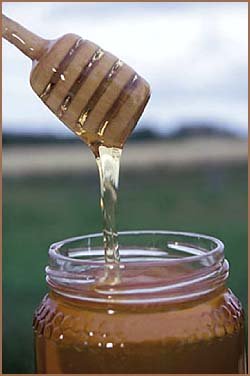
Honey from bees has been used for thousands of years as a medical treatment for wounds, and modern medical science has established that honey has antiseptic and anti-bacterial properties, thanks in part to its relatively high acidity and high sugar content, which restricts the amount of water available for micro-organisms to grow.
As a result of these great properties, honey has been known to last for many years or even centuries without spoiling.
On one occasion archeologists are reported to have tasted honey that had been stored for more than 2000 years in an Egyptian tomb.
In the 16th Century, a Chinese writer described the funeral process of mellification, in which an elderly person would eat only honey for the last days of their life, and upon their death would be entombed in a stone coffin filled with honey.
After a century or so, the preserved body would be broken into a type of candy and sold as a remedy for broken limbs and other ailments.
Yummy ... excuse us, mummy!
Weird Facts: Beware The Alien Hand
- 10th of 15
Alien Hand Syndrome is a rare neurological disorder where one hand functions at times without the knowledge of its owner.
Most cases of Alien Hand Syndrome are more of a nuisance than a threat, but extreme cases include the errant hand suddenly stuffing food into its owners mouth, unbuttoning clothing, and even self-inflicted punching.
Alien Hand Syndrome is more than a simple involuntary movement of the limbs - researchers say the actions of the "Alien Hand" generally have a distinct goal-oriented purpose. Scaaaary, right?
It is thought that Alien Hand Syndrome may result of damage to the corpus callosumregion of the brain, which directs the conscious control of parts of the body.
Fun Interesting Facts: Coffee Tunes
- 11th of 15

Too much coffee can cause auditory hallucinations - hearing things that are not there.
Recent research from Australia indicates that just five cups of coffee a day can trigger the effect.
The researchers played "white noise" - a fuzzy background sound covering all frequencies in the range of human hearing - to the participants in the study and asked them to report when they heard the Bing Crosby song "White Christmas".
The participants who had drunk the most coffee were the most likely to report hearing fragments of the song among the "white noise" - although "White Christmas" was never played.
Fun Interesting Facts: Lobster Dinners For All
- 12th of 15
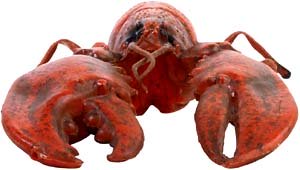
When the first European settlers arrived on the New England coast of North America, lobsters were said to be so plentiful that they barely required any effort to trap them, and sometimes washed up in piles on the beach after a storm.
And they were big, too. Since there was no commercial fishing in those days, the largest lobsters could grow for many years and were reported to sometimes weigh as much as 10 kilograms - enough to feed a family for a week.
Lobsters were initially so plentiful that they were regarded as a "poor man's food". It was not until the 19th Century that the population of lobsters began to dwindle, and they became a rare and expensive delicacy.
Fun Interesting Facts: Since Sliced Bread
- 13th of 15
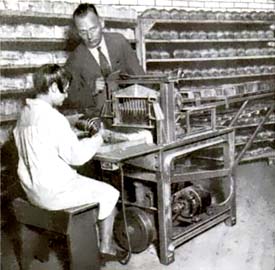
Sliced bread ... when what that actually invented?
Not that long ago.
The invention of sliced bread is credited to an American inventor, Otto Frederick Rohwedder, who developed the first automatic bread-slicing machine in the 1920s.
Rohwedder was a successful jeweler in St Joseph, Missouri, who sold his business to fund the development of his machine, which could both slice the bread and wrap it.
It was first put to use by the Chillicothe Baking Company of Missouri in 1928, and the first automatically-sliced loaf was sold on the 7th of July that year.
OOne thing leads to another, because the standardized loaves of bread produced by Rohwedder's machines aided the adoption of the automatic pop-up toaster, invented in 1926 by Charles Strite of Minneapolis, Minnesota.
Interesting Random Facts: Silks From The Sea
- 14th of 15
Silk is great, right?
Wonderful, delicious stuff that make for the greatest fabric. But there's something even better.
Sea-silk is an extremely fine fabric made from filaments produced by certain shelled mollusks to anchor themselves to rocks on the sea-bed. /p>
In the early 20th century, sea-silk was commonly produced in the Mediterranean region from the noble pen shell, also known as the "sea-silkworm". The filaments were gathered, spun and treated with lemon juice; the resulting threads can be spun into a fabric finer than silk.
SSadly, environmental threats such as over-fishing and pollution mean that the noble pen shell is now an endangered species, and the production of sea-silk has all but disappeared.
Interesting Random Facts: Foam Of The Universe
- 15th of 15
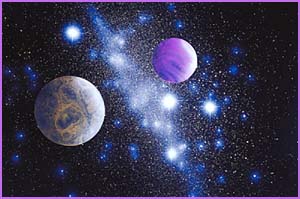
Physicists studying the composition of the universe have established that all visible matter - all the atoms that make up our world, the sun and planets, the stars in our sky, and the galaxies that stretch to the edge of the known universe - make up just less than four percent of the substance of the universe.
Roughly a quarter of the universe is inert "dark matter", which is invisible to light but has a gravitational effect on the rest.
Almost three-quarters of the mass of the universe exists in the form of "dark energy" - a mysterious substance that has so far eluded precise scientific definition, but is known to repel matter (in a fashion quite the opposite of gravity) and is thought to be responsible for the expansion of the universe since the Big Bang, more than 14 billion years ago.
In other words: Everything we see is just the fine luminous foam of the universe ...
Where Would You Like to Go Next?
Weird and Funny Facts of Life to Make You Wonder, Ponder and Wake You From Your Blunder
Weird Facts That Will Make you Laugh, Strange But True Facts to Blow your Mind and Arouse your Interest
Back to the top of this page about Weird But True Facts You Didn't Know You Didn't Need
Go to the Quotescoop.com Homepage







